Real Food
Russian, Polish, Foraged, Soul at Home Or On the Go
The latest batch of cookbook recommendations reflect the renewed interest in traditional cooking and the soul-satisfying pleasures of communing with the ones we love around the dinner table.
In short, it’s never been a better time to head into the kitchen to feed our families and friends with home-cooked dishes from homey to fancy, but above all, seasoned with love.
The Campout Cookbook
Inspired Recipes for Cooking around the Fire and under the Stars
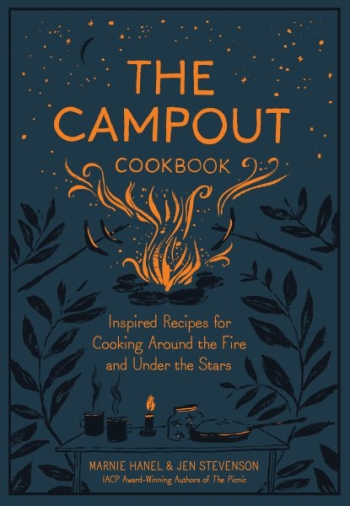
Marnie Hanel
Jen Stevenson
Artisan
Hardcover $19.95 (224pp)
978-1-57965-799-4
Buy: Local Bookstore (Bookshop), Amazon
The important message underpinning Marnie Hanel and Jen Stevenson’s otherwise playful The Campout Cookbook is tucked at the end: “On a small scale, we think the best thing you can do for the environment is to bring your friends outside.” The authors’ enthusiasm for feasting around a well-made campfire shines in their detailed instructions for assembling the right cooking gear, recipes, and unplugged entertainments.
The principal focus is on car camping, as most plans and recipes involve cast-iron cookware, a well-stocked camp kitchen, and one or two coolers. This really expands campfire meals from the standard crowd pleasers, though multiple variations of gorp, bug juice, and an outstandingly refined recipe for s’mores with homemade marshmallows are still there. Most of the recipes involve home prep of ingredients, and there are wonderful multicourse menu ideas, from an Italian dinner to an elaborate Two-Skillet Sunrise breakfast bonanza.
Whimsical color illustrations add extra visual punch to the zippy magazine-style layout. The cookbook is punctuated with flow charts, matrices, and insertions of helpful camping advice, including ninety-nine ways to use a Thermos, skinny-dipping tips, how to spot common poisonous plants, and a primer on constellations.
The recipes are still the stars of this book, however. There are special chapters on breakfasts, trail snacks for everyone from kids to dogs, some inventive sides and salads (Garlicky Grilled Artichokes! Foil Packets of Apricots, Honey, Rosemary, and Elderflower Liqueur!), desserts, and “Fortifications.” The latter covers essential campfire party libations from cold to hot, including a refreshing Cucumber-Mint Cooler, numerous flavors of jelly shots, and tepache, the lightly fermented pineapple drink from Mexico.
How delightful it would be to cook your way through these pages, feasting your eyes on mountain vistas while your belly savors homemade salmon jerky and a steaming mug of Peanut Butter Hot Chocolate (“will give you a head start on your winter coat”). Mouthwatering recipes aside, Hanel and Stevenson write with flair and creativity, and their prose translates into action plans for some really fantastic outdoor sleepover parties.
RACHEL JAGARESKI (April 27, 2018)
Soul
A Chef’s Culinary Evolution in 150 Recipes
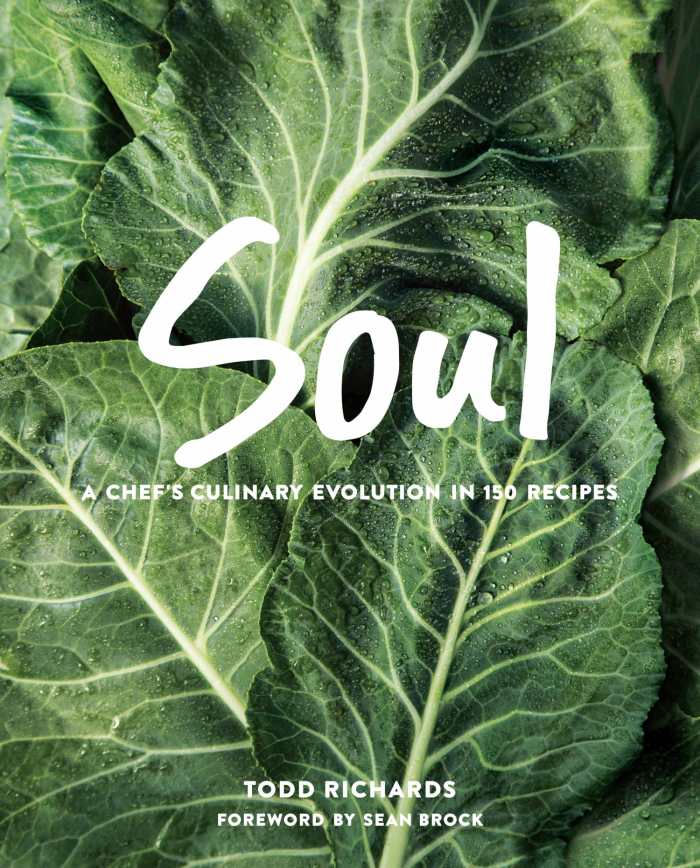
Todd Richards
Oxmoor House
Hardcover $35.00 (368pp)
978-0-8487-5441-9
Buy: Local Bookstore (Bookshop), Amazon
Todd Richards’s Soul: A Chef’s Culinary Evolution in 150 Recipes is a thoughtful introduction to African American food, though it is only the launching point for Richards’s inventive cooking repertoire. Chapters begin with base recipes for food staples like stone fruits, pork, and corn; as heavy as these recipes are, they are just warm-ups for the maestro restaurateur as he crafts increasingly complex dishes, easily riffing to transform classics with global flavors, techniques, and unexpected ingredients like pea tendrils, beet powder, and sambal oelek.
Aside from being a well-illustrated, well-organized, and well-written cookbook, Soul defines Richards’s core philosophies about food, creativity, and society. His heartfelt opinions about race in America and the importance of sharing food at the table as an expression of love and fellowship infuse this book with extra meaning. He is also passionate about avoiding food waste and makes a tasty and persuasive case to save collard green stems for pickling, as well as for trying often-unloved products like gizzards, chitlins, and okra seeds.
Menus for a variety of festive events show off Richards’s virtuosity, from a homey fish fry to a fancy brunch fueled with such inspired dishes as Strawberries with Champagne Aspic, Whipped Cream, and Honey. It would take a family emergency (something really dire) to skip an invitation to the Chef’s Table menu at his house for some Smoked Catfish Dip with Parmesan Tuiles and dazzling Sea Urchin with Smoked Tomato Broth.
The simple titles belie the elegance and layers of flavor, color, and texture that Richards builds up in his recipes. He divulges many tricks of the trade, offering advice for home cooks on everything from how to rescue overdone calamari to a persuasive discussion of how to cook pork jowl. Recipes come with advice on appropriate side dishes and beverages, and the menus even have suggested soundtracks.
Most of all, Soul distills many years of cooking, improvising, and learning about different ingredients. Richards is a masterful chef who generously doles out his expertise and perspective in this inspiring book.
RACHEL JAGARESKI (April 27, 2018)
Southern from Scratch
Pantry Essentials and Down-Home Recipes
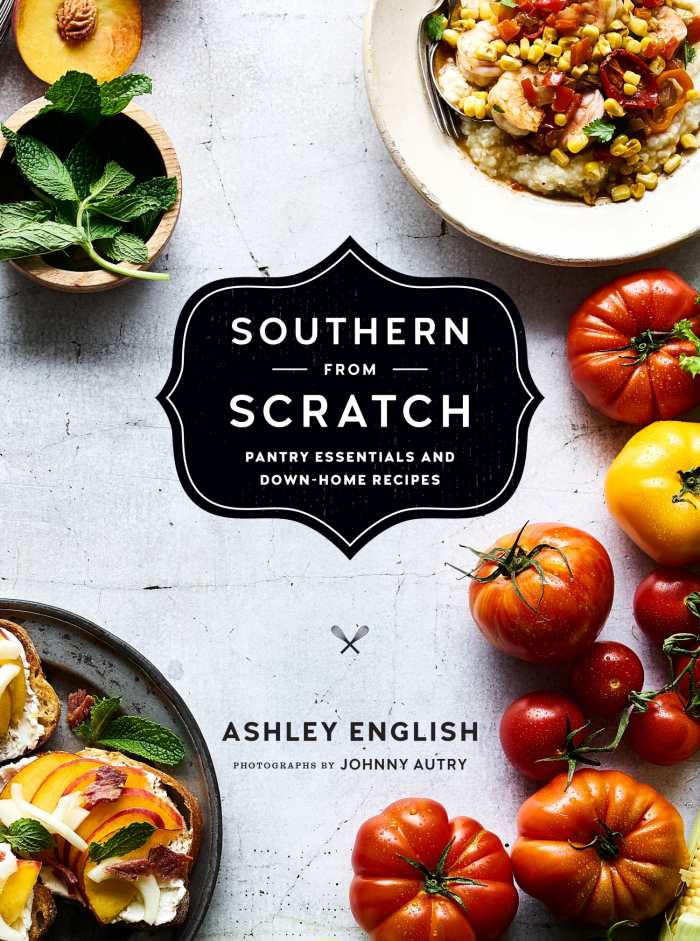
Ashley English
Johnny Autry, photographer
Roost Books
Hardcover $35.00 (256pp)
978-1-61180-331-0
Buy: Local Bookstore (Bookshop), Amazon
Drawing from her Appalachian roots and degrees in nutrition, Ashley English’s Southern from Scratch shows how to stock your kitchen with whole-food goodness, from sweet treats in the freezer to sparkling jars of home-canned pickles.
Once an advocate of a low-fat, vegetarian diet, English evolved a seasonal, slow-foods approach that includes meat but eschews processed products, just like her Nanny and Mamaw did.
Accented with atmospheric color photographs, the cookbook lays out fifty base recipes for preserves, homemade apple cider vinegar, dairy products, and plenty of tempting desserts that rely on natural sweeteners for “a kiss of sweetness, instead of a smack upside the head.” Traditional Southern ingredients are highlighted, as are uncomplicated instructions for traditional food preservation techniques like hot-water-bath canning and lard rendering.
Recipes are prefaced with homey, often humorous introductions that recall family lore, Southern culinary history, or treasured kitchen memories. English has a light, down-to-earth writing style that makes the idea of whipping up a batch of pies or home-curing a side of bacon seem like a snap. Several ideas for using recipes are included, so after those jars of Pickled Okra are cooled you can chop them into salads, crown Pecan Coins slathered in Pimento Cheese with them for a quick canape, or use them as stirrers for Spicy Bloody Marys.
Many recipes are whole-food improvements of Southern icons like hush puppies and sonkers, a North Carolina fruit-cobbler cousin. English’s recipe for ambrosia is a particularly welcome reiteration of this usually cloying dessert, utilizing a combination of fresh fruit chunks, homemade sour cream, lemon verbena, and coconut. Others recipes show off her creativity, as in Brussels Sprouts Salad enrobed in Apple Butter Vinaigrette.
This volume is an inspiring resource for homesteaders, but even urbanites will like the ideas for putting up seasonal abundance, Southern style. This book is full of tempting foods that will have you reaching for your wooden spoon, cast-iron skillet, and claw hammer (for knocking together another pantry) all at once.
RACHEL JAGARESKI (April 19, 2018)
T-Bone Whacks and Caviar Snacks
Cooking with Two Texans in Siberia and the Russian Far East
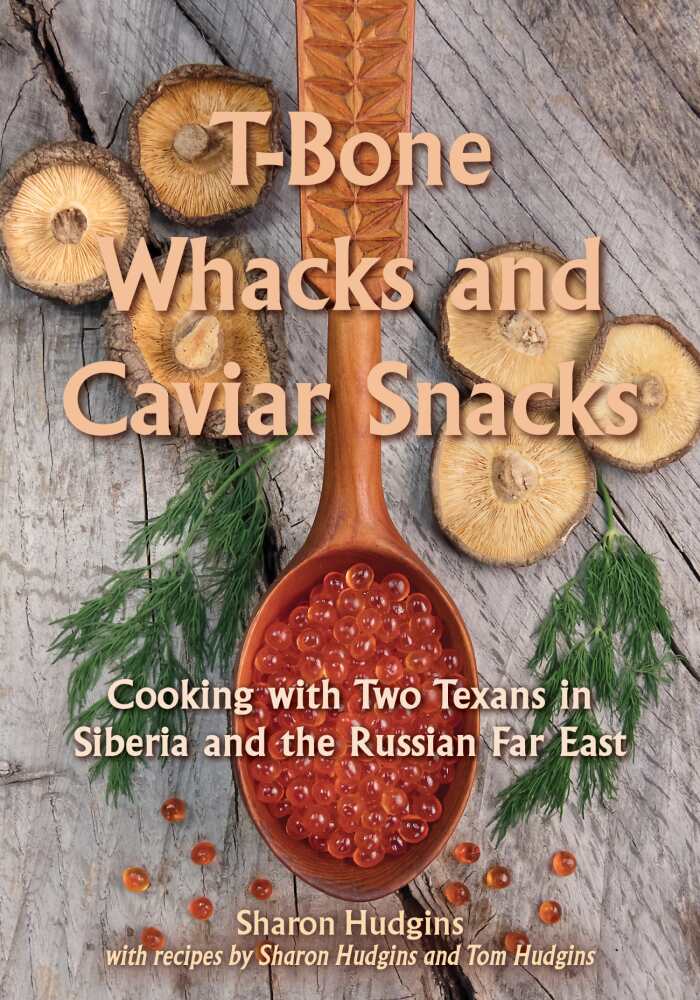
Sharon Hudgins
Tom Hudgins
University of North Texas Press
Hardcover $39.95 (448pp)
978-1-57441-714-2
Buy: Local Bookstore (Bookshop), Amazon
The Russian Far East is little known to outsiders, but Sharon Hudgins vividly captures a fair slice of its fascinating food culture in T-Bone Whacks and Caviar Snacks. Hudgins and her husband Tom, Texans and professors both, taught in Vladivostok and Irkutsk in 1993, shortly after the end of the Soviet Union and during a time of political and economic transition, and in 2006, when the new market economy transformed shopping, cooking, and traveling.
Part culinary memoir, part travelogue, T-Bone Whacks (the chunks of frozen beef that market vendors split off to order with an axe) vividly observes how Siberians cook, celebrate holidays, forage, garden, and preserve traditional foods. Chapters are capped with numerous recipes cajoled from the Hudginses’ friends and neighbors and from their extensive travels. Sidebar discussions of cultural tidbits and photographs of markets, vernacular architecture, and cooks at work in their tiny kitchens evoke even more imagery of this distinct region.
Hudgins is a genial guide. Instead of grumping about rolling blackouts (no heat in the midst of winter!), tap water of varying hues and odors, and wacky stoves, she gamely prepares the meals described with winning humor and charm. During both sojourns, the Hudginses lived in brutalist concrete apartment blocks with indifferent elevators; there are memorable tales of epic feasts eaten in friends’ improvised dining rooms, their tables groaning with a mosaic of dishes and drinks. Indeed, it seems that the biggest challenge the author faced was soldiering forth after yet another night of heavy eating and vodka.
The Hudginses are adventurous travelers and explored a lot of territory, from wilderness hikes with scientist colleagues to nibbling freshly slaughtered sheep parts with a Buryat family north of Lake Baikal. Though the volume reveals much that is exotic, there is also an underlying message of our shared humanity and the universal pleasures of communal dining. As the book concludes: “Siberians are actually a lot like Texans: Bigger is better, food is friendship, and no guest ever leaves the table hungry.”
RACHEL JAGARESKI (April 27, 2018)
Dirty Gourmet
Food For Your Outdoor Adventures
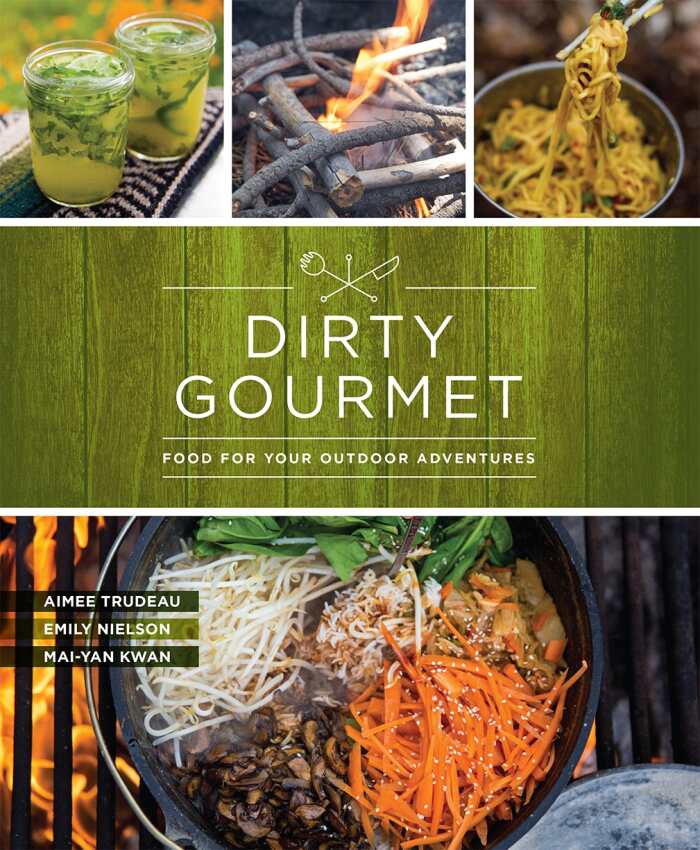
Aimee Trudeau
Emily Nielson
Mai-Yan Kwan
Skipstone
Softcover $24.95 (256pp)
978-1-68051-129-1
Buy: Local Bookstore (Bookshop), Amazon
In 2009, Aimee Trudeau, Mai-Yan Kwan, and Emily Nielson began blogging about their passion for the outdoors, complete with delicious provisions. The “Dirty Gourmet Girls” showcase the Southern California landscape and some pretty fine food in stunning color photos in their new cookbook, Dirty Gourmet. It highlights their philosophy that food is not just fuel for outdoor adventures but “a significant part of a journey’s memory.”
The book is divided into three sections: “On the Trail,” “Car Camping,” and “Backcountry Camping.” Each contains useful advice for meal planning, cooking tips, a list of essential gear, and recipes. The authors’ experience and exuberance resonate throughout. There is clear instruction and motivation for enjoying the outdoors, whether one is considering a simple day hike with young kids and a backpack filled with fun picnic foods or launching a restorative week-long backwoods getaway with friends, capped with end-of-trail cocktails and desserts.
The emphasis is on healthy, energy-rich, mostly vegan and vegetarian meals (customizable for omnivores), though there are helpings of awesome eats for carnivores and sweets fans (Barbecue Pie Bombs or Pecan Praline Fondue, anyone?). While most meals involve simple prep and cooking techniques, there are detailed explanations of campfire cooking methods and lots of hearty breakfast ideas to jump-start physically active days.
There are some surprising and inventive recipes, too, such as English Muffins from scratch with homemade skillet jam, elegant Baked Brie with Candied Pecans, Campfire Bibimbap, and Ecuadorian Canelazo, a hot drink concocted of spiced rum and orange juice.
Chatty recipe introductions exhibit a lot of humor and personality, and there are many reminders to demonstrate respect for the natural environment by packing everything out, properly dousing campfires, and critterproofing campsites.
The trio have a deep love of backcountry camping, noting that “the farther into the wilderness we get, the happier we seem to become.” Hopefully, this book will inspire more folks to get outside and get cooking.
RACHEL JAGARESKI (April 27, 2018)
Bake from Scratch: Volume Two
Artisan Recipes for the Home Baker
Brian Hart Hoffman
83 Press
Hardcover $39.95 (400pp)
978-1-940772-48-6
Buy: Local Bookstore (Bookshop), Amazon
Baking is chemistry; baking is alchemy; baking is craft. Brian Hart Hoffman’s Bake from Scratch: Artisan Recipes for the Home Baker, Volume Two celebrates all of these aspects with more than 600 recipes from the sophomore year of Bake from Scratch magazine. It’s a hefty, well-illustrated idea book for the serious baker who wants to try new recipes and techniques.
The large format allows for most nearly every recipe to be delineated on a single page, and it falls open easily to lie flat for ease of use. Large, luminous color photographs for all of the recipes and smaller thumbnails for many others are very helpful guides toward the perfect crumb, crust, or cream. Bakers will also appreciate that measurements are given by both volume and weight.
There is not a lot of chapter or recipe preamble, and the book presumes knowledge of advanced techniques and cabinets full of specialized gear, ingredients, and pans. As such, it seems best suited for more accomplished bakers, though the less experienced may be inspired by all the baking porn to challenge themselves to create a special-occasion treat.
The diverse range of baking recipes is particularly noteworthy. Some are culled from a number of traditional cuisines, like Greek tsoureki, a braided sweet dough flavored with mahleb (a spice made from ground cherry pits), and the handful of recipes for variations of roosterkoek, puffy grilled bread from South Africa. Other innovative recipes involve unusual flavor combinations, like celery Gruyère gougères and charred squash pound cake with black pepper and parmesan. The book also includes an extensive holiday cookie section with instructions for everything from homey shortbreads to elaborately decorated “embroidered” cookie ornaments.
This would be an inspirational addition to an accomplished baker’s cookbook collection. It’s an impressive volume that is guaranteed to stretch anyone’s repertoire of baking skills and recipes.
RACHEL JAGARESKI (April 27, 2018)
The Fruit Forager’s Companion
Ferments, Desserts, Main Dishes, and More from Your Neighborhood and Beyond
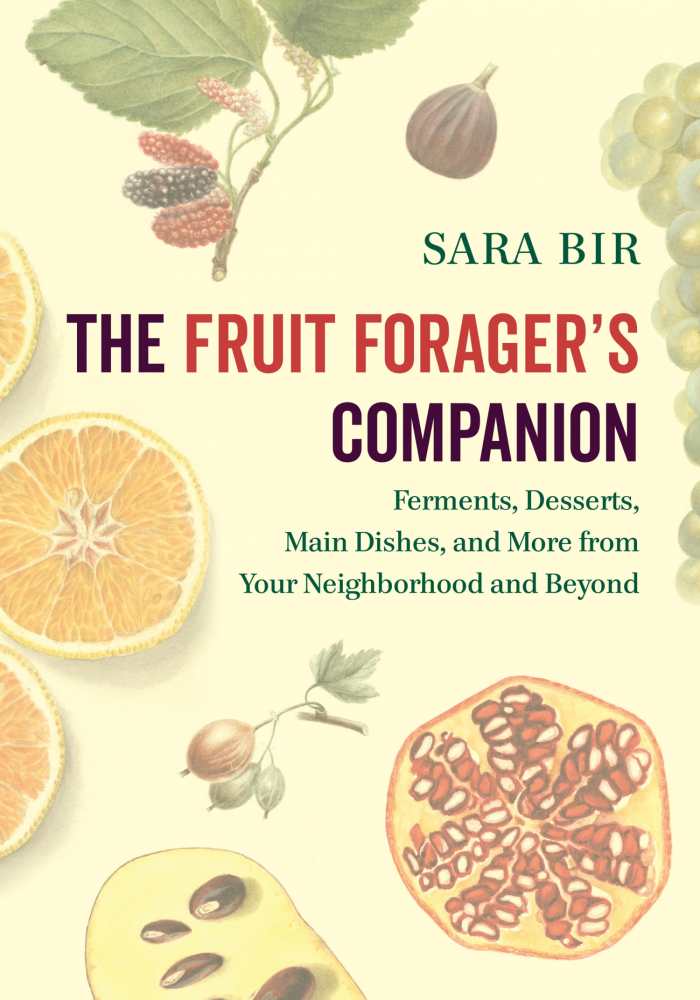
Sara Bir
Chelsea Green Publishing
Softcover $29.95 (400pp)
978-1-60358-716-7
Buy: Local Bookstore (Bookshop), Amazon
A Culinary Institute of America degree armed Sara Bir with cooking expertise, but it’s her clever writing and inquisitive, experimental mind that make The Fruit Forager’s Companion so exciting. This hybrid cookbook/plant guide/DIY manual entertains as much as it informs.
Bir eloquently discusses why foraging is a satisfyingly sustainable, meditative way of collecting food, and of reconnecting to neighbors and to the natural environment. She provides reassuring information for novice and experienced cooks alike, dispensing advice on foraging etiquette (Don’t be a “scrumper”—someone who steals apples from orchards) and thoroughly breaking down methods of harvesting, storage, and preservation, from canning to fermentation.
Forty-one chapters on fruit species are packed with essays, photographs, recipes, and ideas for kitchen experimentation. There are also all-important tips on correctly identifying edible fruits and their poisonous look-alikes. While the book provides ample information on common fruits, the passages about unusual fruits, like sumac and loquats, are invaluable. Bir is well-versed in food history and foodways, leading to intriguing discussions of old-fashioned preservation methods and charming recipe ideas from “wild cherry bounce” to pontack, which is a sort of elderberry Worcestershire sauce.
This compendium delivers a wealth of Bir’s sassy opinions and and effervescent prose. Whether she is expounding on the importance of lifelong exploration, the dangers of monoculture agribusiness, or describing ground cherries (“I delight in their lacy little hulls, the berries like golden pearls in a filigree setting”) and rose hips (“If rose hips were women, the ones you’d want would look like R. Crumb drew them”), her writing exudes personality, wit, and intelligence.
Bir is a learned, inventive guide whose sly humor and playful voice will win many over to become dedicated fruit scroungers and recipe explorers. Perusing this book will have you playing around with your food in no time, whether it’s mahonia or maypops, mayhaws or pawpaws.
RACHEL JAGARESKI (April 27, 2018)
Wild Honey and Rye
Modern Polish Recipes
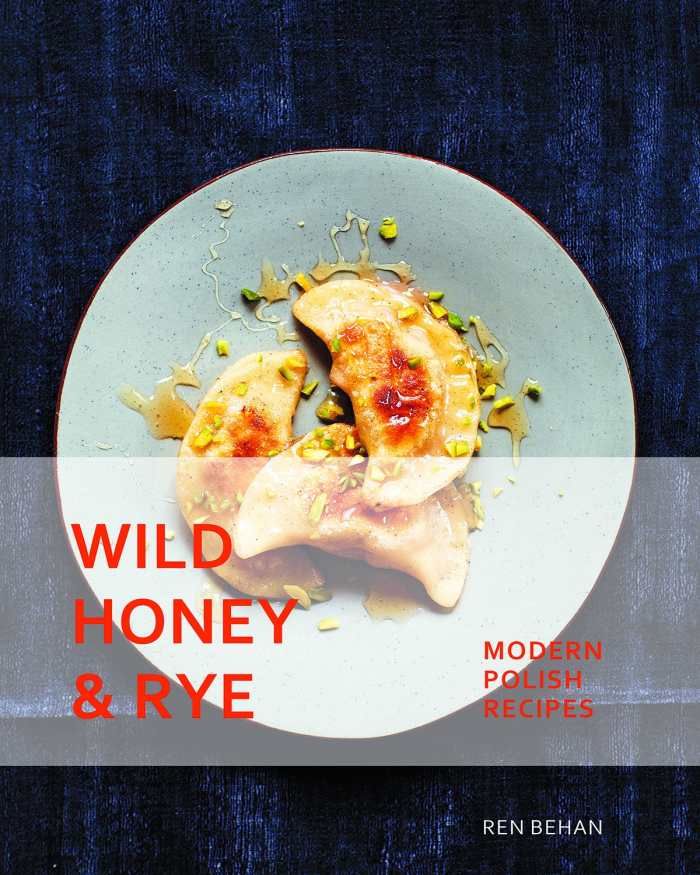
Ren Behan
Interlink Books
Hardcover $30.00 (208pp)
978-1-62371-998-2
Buy: Local Bookstore (Bookshop), Amazon
Ren Behan’s Wild Honey and Rye transforms the treasured foods of her Polish forbears into fresher, lighter recipes. While there are still hearty dishes in the mix, Behan’s emphasis is on adaptations of classic Polish fare to reflect modern eating habits and recipes inspired by Poland’s vibrant restaurant scene.
Clearly written and enhanced with many personal anecdotes, the book starts with an excellent introduction of common Polish ingredients and flavors. As befits the title, the leadoff recipe is for a honey and rye loaf, followed by sections covering many zippy kinds of salads, soups, noodle dishes, meats, fish, and street foods. Each recipe title is in English and Polish, and a folk-art floral motif anchors the pages.
Polish cuisine gives star status to the cabbage, the pierogi (there are seven sweet and savory variations of this crowd pleaser), root vegetables, and comforting soups for long, cold winters, but Behan has many unexpected recipes. There’s her twist on Steak Tartare, redolent with homemade lovage oil, millet kaszotto, and Venison with Roasted Pumpkin and Thyme Puree.
The Polish sweet tooth appears in many recipes via fruit and honey. In the chapter entitled “High Tea,” Behan describes the cakes and other treats that many Poles enjoy as their daily afternoon snack. Potent potables often feature later in the day, and home brewers will enjoy the fascinating chapter on fruit liqueurs and vodkas flavored with everything from quince to salted caramel.
Underscoring the lightened-up Polish fare, the layout is sleek, airy, and shot through with the author’s scintillating photographs of Warsaw markets and street scenes. Recipe photographer Yuki Sugiura gets a special nod for capturing artful images of stodgy foods that are tricky to shoot, like bowls of stew and plain loaf cakes.
Wild Honey and Rye is a colorful, informative tour of Polish food by an author who has deep roots in Poland and is proud to share her cultural inheritance.
RACHEL JAGARESKI (April 27, 2018)
Rachel Jagareski

